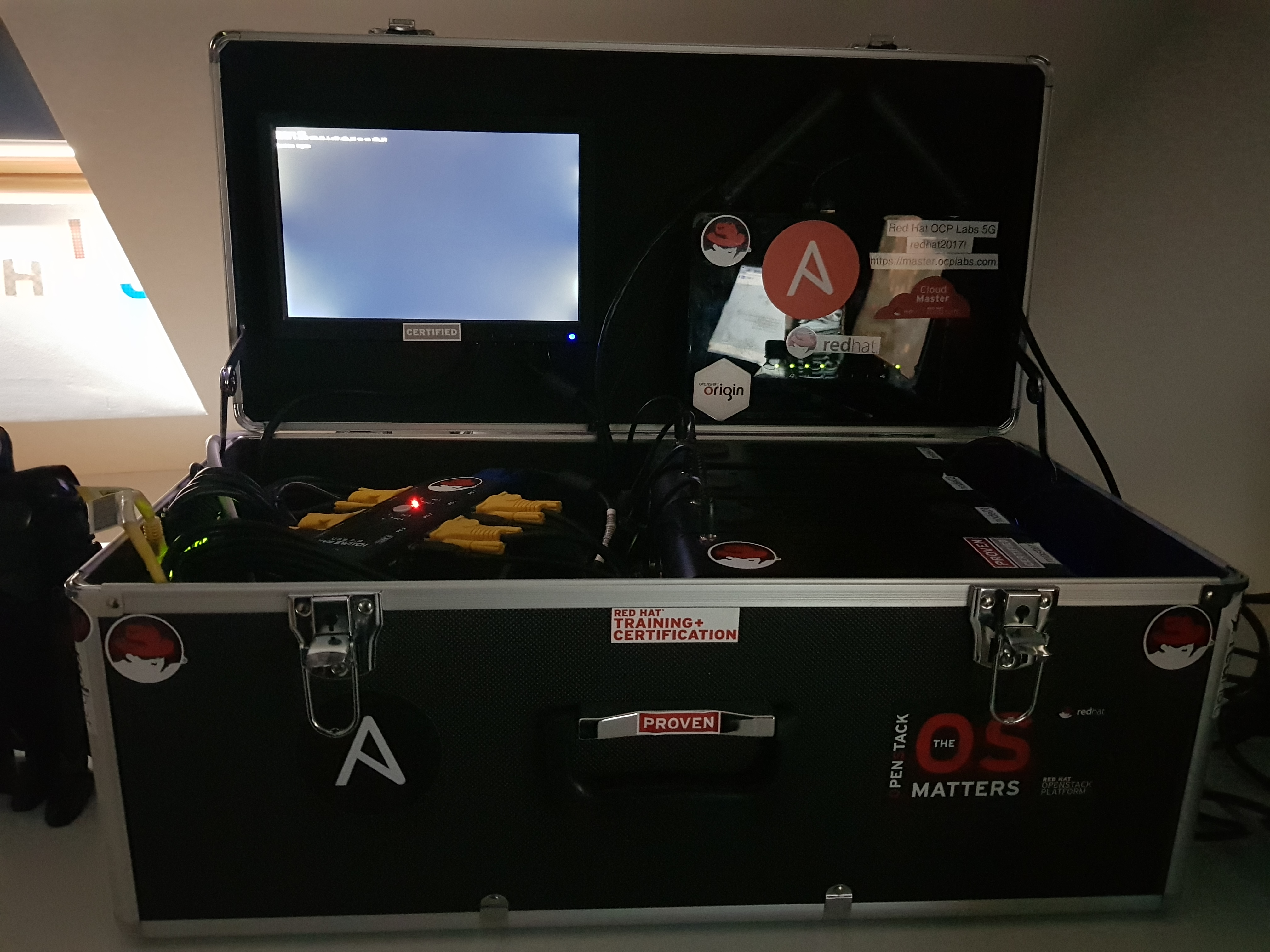This document described how to install a Red Hat OpenShift 4 Cluster on a Lab environment.
The lab environment consists of the following parts:
- 4 Bare-Metal machines with 16 GB RAM and 2x SSDs (128 GB and 256 GB) each
- 1 Bastion host with 4 GB RAM and 2x SSDs (250 GB and 500 GB)
- 1 Gigabit Switch
- 1 WLAN-Router
- 1 KVM switch
- 1 LCD-Panel
- USB keyboard and mouse connected to KVM switch
- 1 toolbox (to contain the lab)
The WLAN router needs to have the following configuration settings:
- Disable DHCP (this will be done via the Bastion host later)
- Define the following DNS servers
- 8.8.8.8
<IP of Bastion Host>
In order for automation to work you need to configure the BIOS of the master and worker nodes to use the following features:
- Boot from Ethernet device
- Wake-On-LAN (usually hidden in ACPI settings)
Create a Bastion host with Red Hat Enterprise Linux 8.1 (or higher) and use subscription-manager to entitle the system.
Also you need to install Ansible via
yum install -y ansible
For creating the Ansible inventory file you will need to define IP addresses for the masters, workers, and bootstrap node.
Go to https://cloud.redhat.com/openshift/token and request an offline access token. This is needed later for requesting the pull secrets for mirroring container images.
Now create an Ansible inventory file named ocp4labs-inventory with the following content (adjust as you see fit):
[ocp4labs:children]
bastion
kvm
masters
workers
bootstrap
[ocp4labs:vars]
host_key_checking = False
ansible_ssh_private_key_file=~/.ssh/id_ocplabs
ansible_ssh_user=root
ocp4_release=4.3.3
ocp4_release_name=ocp-release
ocp4_type=bare-metal
ocp4_cluster_name=<cluster-name>
ocp4_cluster_domain_name=<cluster-domain-name>
rhcos_release=4.3.0
# Taken from https://cloud.redhat.com/openshift/token
ocp4_offline_access_token=<offline-access-token>
[all]
master01 ansible_host=<node-ip> ethernet="<node-mac>" kvm_host=kvm01
master02 ansible_host=<node-ip> ethernet="<node-mac>" kvm_host=kvm02
master03 ansible_host=<node-ip> ethernet="<node-mac>" kvm_host=kvm03
worker01 ansible_host=<node-ip> ethernet="<node-mac>" kvm_host=kvm01
worker02 ansible_host=<node-ip> ethernet="<node-mac>" kvm_host=kvm02
worker03 ansible_host=<node-ip> ethernet="<node-mac>" kvm_host=kvm03
bastion ansible_host=<node-ip> ethernet="<node-mac>"
[bastion]
bastion
[kvm]
kvm01
kvm02
kvm03
[masters]
master01
master02
master03
[workers]
worker01
worker02
worker03
[bootstrap]
worker01
ssh-keygen -f ~/.ssh/id_ocplabs
cat ~/.ssh/authorized_keys <Content of ~/.ssh/id_ocplabs.pub>
cat ~/.ssh/config IdentityFile ~/.ssh/id_ocplabs
Now you are ready to run the Ansible playbook as follows:
ansible-playbook -vvv -i ocp4labs-inventory ocp4labs.yml
Depending on the hardware available and speed of the internet connection this may take a while, so grab a coffee or cook yourself a good meal. Soon you will have a fully functional OpenShift 4 Cluster up-and-running to play around with.
